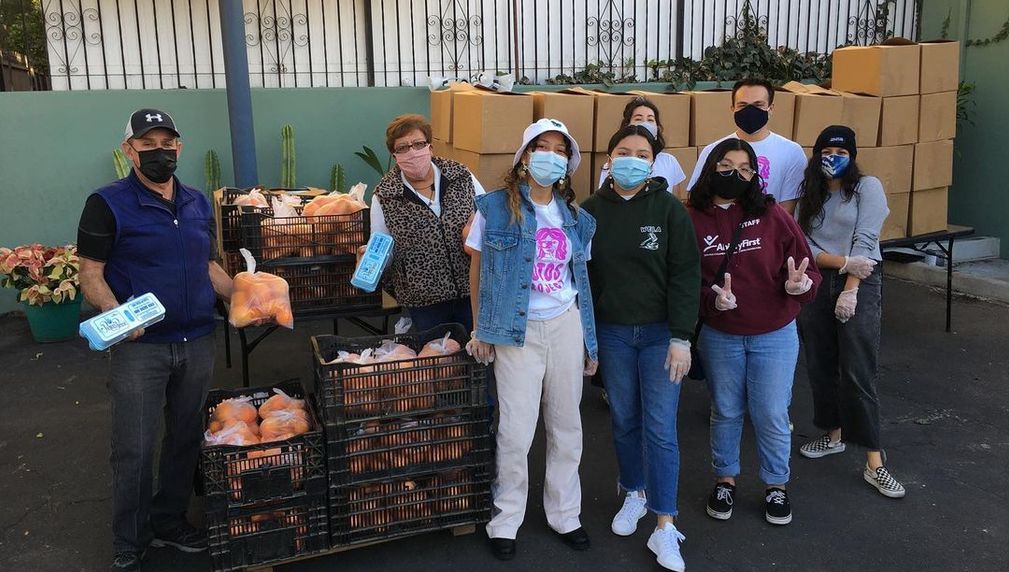Eat! The Farmers Market
Food Access LA wants to leverage our Eat! online ordering and distribution program to start a market wide Community Supported Agriculture (CSA) program that would work with 5-7 different farmers to provide fresh produce for CSA boxes that would be delivered and distributed throughout the community. Funds from this grant would allow us to expand our reach and offer subsidized boxes to community members living near our markets who cannot physically access them due to location, disability, lack of transportation, or due to schedule conflicts.

What is the primary issue area that your application will impact?
Food insecurity and access to basic needs
In what stage of innovation is this project, program, or initiative?
Pilot or new project, program, or initiative (testing or implementing a new idea)
What is your understanding of the issue that you are seeking to address?
We want to implement our CSA program at 3 of our farmers market locations in South Los Angeles, a historically under-served area of LA county containing only 5% of all the farmers markets in the County and a high concentration of fast-food restaurants, liquor stores, and limited serviced corner stores. Most of the grocery stores in this area do not carry local or regionally grown produce, which is why it’s imperative we are able to sustain our farmers market in these neighborhoods and offer more ways for members of the community to learn about the farmers market, and access food from it. Five of our farmers markets serve 13-20% of communities at or below the poverty level. Of that population, 44% (as of July 2023) face food insecurity. Compared to the rest of the Los Angeles metropolitan area, the South Los Angeles region has a lower education level, and lower income, and is a largely non-white community that greatly needs access to fresh, local, highly nutritious produce.
Describe the project, program, or initiative this grant will support to address the issue.
To create a more sustainable food system and ensure access to regionally grown produce in federally designated LI/LA communities, we plan to strategically implement a CSA program at three of our farmers market that are in or near these lower-income communities, partner with multiple community partners to subsidize CSA shares for lower-income families, and offer convenient pick-up locations for families and individuals who live too far from our farmers markets, or cannot physically attend them in person. This project would benefit low-income individuals and families living in or near our three South Los Angeles farmers markets and one of our East Los Angeles farmers markets, where the grant activities will occur. These families will have the opportunity to participate in our CSA and receive a free, or subsidized box that will contain a mix of different fruits and vegetables sourced from our regional farmers who attend the markets. Our project would also specifically benefit disabled, elderly or people with mobility issues who live too far from the market or cannot physically access them because our program would provide home delivery to deliver the produce directly to them. This would give these under-served community members direct access to local food which is a huge benefit for people who suffer from disability or mobility issues and cannot easily leave their home to shop the markets.
Describe how Los Angeles County will be different if your work is successful.
We see this project as a way to guarantee that farmers would continue to serve our South LA markets as one challenge our organization faces is retaining vendors at these smaller markets that are not as lucrative for them. This has been an ongoing issue in South LA and we want these communities to have the same access to farmers market produce as other neighborhoods do throughout LA county. Therefore, the long-term impact is that these under-served communities will have continued access to local food and more people in the community will become educated about farmers market locations and local food options.
Moreover, the information from this project would also be extremely useful for LA County. We think other organizations, food hubs, farmer networks and government agencies would benefit from knowing whether a market-wide CSA can help retain farmers in lower performing markets and expand accessibility to people with disabilities, mobility issues, or a lack of transportation.
What evidence do you have that this project, program, or initiative is or will be successful, and how will you define and measure success?
We have been actively testing this idea and have already made multiple large distributions to community organizations. We measure success based on the number of boxes we are able to provide, and the number of people and/or families we are able to serve. We are currently testing a 6-week Summer CSA program that is too expensive for the lower-income communities we want to serve. Upon launching our sign-ups, we immediately received requests to sign up from individuals who use EBT, but we are not set up to accept EBT as a form of payment for this program right now. This is what gave us the idea that, maybe we could apply to a grant to cover the costs of providing the boxes to those individuals who want a farmers market produce box, but simply cannot afford it.
Approximately how many people will be impacted by this project, program, or initiative?
Direct Impact: 742.0
Indirect Impact: 1,859.0